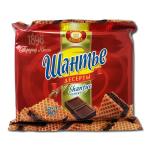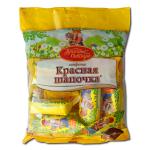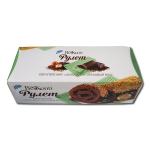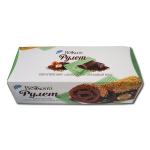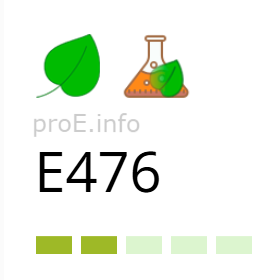
Other names for the additive (synonyms)
General Information
Polyglycerol is a food additive labeled as E476, used in the food industry as an emulsifier.
In terms of its chemical composition, additive E476 is a compound of fatty acids. It can be used in the production of chocolate confectionery as a substitute for E322 (plant-based lecithin).
To produce polyglycerol, glycerol (additive E422) undergoes controlled polycondensation at high temperatures under water-free conditions. The glycerol is usually derived from natural fats and oils (such as castor oil from castor seeds), although in recent years, raw materials derived from
Ricinoleic acid required for the synthesis of additive E476 is typically extracted from castor oil, a product of castor seed (Ricinus communis) processing. The production of polyglycerol polyricinoleate involves esterification of polyglycerol with ricinoleic acid at elevated temperatures (around 200°C) in the presence of acidic or basic catalysts.
The result is a viscous oily substance that is well soluble in fats, making E476 an effective emulsifier for chocolate and other fat-based systems.
The production process is strictly controlled to eliminate toxic residues and ensure compliance with EU safety standards.
Effects on the Body
Benefits of Additive E476
The presence of polyglycerol in foods allows for reduced fat content and calorie levels in the final products while maintaining the desired texture. However, polyglycerol itself does not provide any health benefits.
Risks of Additive E476
Data on the potential harm of E476 are somewhat contradictory. Polyglycerol underwent testing by the FSA (Food Standards Agency, UK) and was approved as a safe food additive permitted for use in the European Union. At the same time, unverified sources online claim that high doses caused liver and kidney enlargement in lab animals.
In 2017, a group of scientists at EFSA re-evaluated E476 and concluded that polyglycerol has low toxicity and is considered “safe.” As a result, the acceptable daily intake (ADI) established by the Scientific Committee on Food (SCF) in 1978 was increased from 7.5 mg/kg body weight per day to 25 mg/kg body weight per day.
Uses
E476 is most commonly used in chocolate production as an emulsifier that allows chocolate with low cocoa butter content to flow as smoothly as high-fat chocolate. This is an important characteristic for proper coating during the manufacturing of chocolate-based products.
Cocoa butter is known to be an expensive ingredient. Therefore, under the pretext of reducing fat (and improving health benefits), manufacturers often use polyglycerol to lower production costs by replacing expensive ingredients with cheaper alternatives.
Legal Status
E476 is officially approved in Ukraine, the European Union, and many other countries. Polyglycerol has been authorized for food industry use by the EU.
